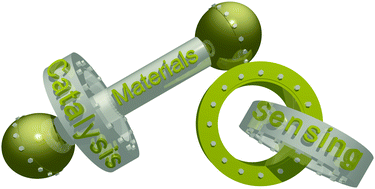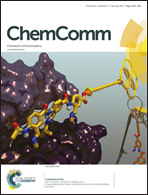Properties and emerging applications of mechanically interlocked ligands
Abstract
Mechanically interlocked molecules have a long and rich history as ligands thanks to the key role coordination chemistry has played in the development of high yielding passive template syntheses of rotaxanes and catenanes. In this Feature Article, we highlight the effect of the mechanical bond on the properties of metal ions bound within the sterically hindered environment of the macrocycle cavity, and discuss the emerging applications of interlocked ligands in catalysis, sensing and supramolecular materials.

- This article is part of the themed collections: Most cited articles from 2017, Most cited Features from 2016, 2017, Most downloaded articles of 2017: Organic and Biological Chemistry and Host–guest chemistry

 Please wait while we load your content...
Please wait while we load your content...